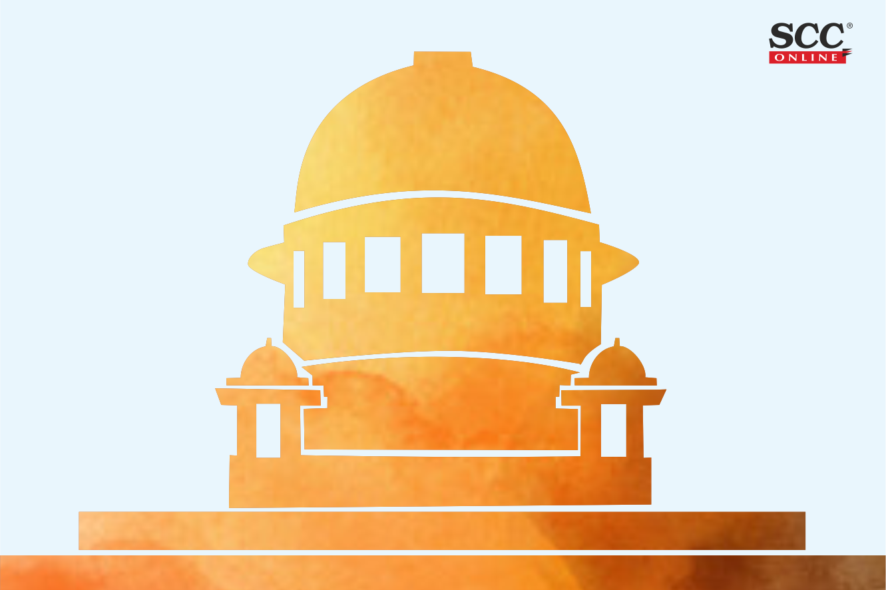Supreme Court: A Division Bench of L. Nageswara Rao and Aniruddha Bose, JJ., quashed the notification dated 17-8-2016 issued by State Government of Haryana, which specified economic criterion as the sole basis of identification of ‘creamy layer’ (socially advanced sections) among backward classes for excluding them from the purview of benefit of reservation in State services and admission to educational institutions. The Supreme Court reiterated that the basis of exclusion of ‘creamy layer’ cannot be merely economic.
Factual Matrix
Scrutinising reservation in backward classes as recommended by the Mandal Commission, the Supreme Court in Indra Sawhney v. Union of India, 1992 Supp (3) SCC 217 had directed State Governments to identify ‘creamy layer’ amongst the backward classes and exclude them from the purview of reservation.
Haryana Backward Classes (Reservation in Services and Admission in Educational Institutions) Act, 2016 was enacted to provide for reservation in services and admission in educational institutions to persons belonging to backward classes in the State of Haryana. Section 5 of this Act provided that ‘creamy layer’ has to be excluded from purview of such reservation. Section 5(2) further postulate that the State Government is to specify criteria for identification and exclusion of ‘creamy layer’ after taking into consideration social, economic and such other factors as deemed appropriate.
2016 Notification
In exercise of powers under 2016 Act, the State Government issued notification dated 17-8-2016 specifying criteria for exclusion of ‘creamy layer’ within backward classes, according to which, sections of backward classes earning above Rs 6 lakh per annum shall be considered as ‘creamy layer’. There was further sub-classification as per which first preference in reservation was to be given to those sections earning upto Rs 3 lakh per annum, and after that to those earning more than 3 lakh but less than 6 lakh per annum.
2018 Notification
The 2016 Notification was challenged by MBBS aspirants before the Punjab and Haryana High Court, which challenge was upheld and the 2016 Notification was set aside. The State of Haryana questioned the correctness of High Court’s judgment before the Supreme Court. During pendency of the appeal, Haryana Government issued another notification dated 28-8-2018 whereby criteria for computing annual income for purposes of the 2016 Notification was fixed as Gross Annual Income which shall include income from all sources.
Students who qualified NEET-2018 again assailed validity of both notifications before the High Court. However, this time the High Court upheld both the notifications. The matter reached before the Supreme Court. The appeals were heard together with writ petition filed for quashing both the notifications.
Analysis and Observations
The Supreme Court noted that Section 5(2) of the 2016 Act clearly provides that social, economic and other factors have to be taken into account for the purpose of determining and excluding ‘creamy layer’ within a backward class.
The Court referred to the earlier notification dated 7-6-1995 issued by the Haryana Government, which was in tune with the judgment of the Supreme Court in Indra Sawhney, 1992 Supp (3) SCC 217. That notification excluded certain persons who held constitutional posts and those who were in employment of the State and the Centre in higher posts from the benefit of reservation. In addition, the social advancement of other categories was taken into account for the purpose of including such categories in ‘creamy layer’. While issuing the 1995 Notification, the State Government had followed the criteria laid out in the memorandum dated 8-9-1993 issued by the Union of India. The Court further noted that strangely, by the 2016 Notification, identification of ‘creamy layer’ amongst backward classes was restricted only to the basis of economic criterion. It was observed that:
“In clear terms, this Court held in Indra Sawhney, 1992 Supp (3) SCC 217 that the basis of exclusion of ‘creamy layer’ cannot be merely economic.”
Reliance was also placed on Indra Sawhney v. Union of India, (2000) 1 SCC 168 and Ashok Kumar Thakur v. State of Bihar, (1995) 5 SCC 403.
The Court concluded that the 2016 Notification was in flagrant violation of the directions issued by the Supreme Court in Indra Sawhney, 1992 Supp (3) SCC 217 and at variance with the memorandum dated 8-9-1993 issued by the Union of India. The criteria mentioned for identifying such of those persons who are socially advanced was not taken into account by the Government of Haryana while issuing the 2016 Notification. It was observed:
“In spite of Section 5(2) of the 2016 Act making it mandatory for identification and exclusion of ‘creamy layer’ to be on the basis of social, economic and other relevant factors, the State of Haryana has sought to determine ‘creamy layer’ from backward classes solely on the basis of economic criterion and has committed a grave error in doing so. On this ground alone, the notification dated 17-8-2016 requires to be set aside.”
Decision
In such view of the matter, the Supreme Court quashed the 2016 Notification dated 17-8-2016. Liberty was given to the State Government to issue fresh notification within a period of 3 months after taking into account principles laid down in Indra Sawhney, 1992 Supp (3) SCC 217 and criteria mentioned in Section 5(2) of the 2016 Act for determining ‘creamy layer’.
As the 2016 Notification was struck down in toto, the Court said that there was no need for adjudicating on validity of the 2018 Notification dated 28-8-2018, which depended solely on the 2016 Notification.
However, it was also directed that admissions to educational institutions and appointment to State services on the basis of these two notifications shall not be disturbed. [Pichra Warg Kalyan Mahasabha Haryana v. State of Haryana, 2021 SCC OnLine SC 635, dated 24-8-2021]







